








|
Electrical Ground Support
Equipments (EGSE) for different space projects
The company has
developed series of
portable EGSEs based on embedded processors with quick look option for
various onboard experiments of Rosetta Orbiter, Rosetta Philae,
MarsExpress,
VenusExpress, BepiColombo and Solar Orbiter missions of ESA. We have
developed also
EGSE for Plasma Wave Complex of the International Space Station
(ISS).
The most important projects are
listed below in
chronological order. All the equipments were delivered in time and they
are still
in use now. The drawing below represents the functional
bock diagram of our EGSEs' configuration, it consists Signal Level
Simulator (SLS) and usual PC.
EGSE/SIS systems
for Rosetta Orbiter and Lander
EGSEs of RPC,
and CONSERT
instruments for Rosetta Orbiter were developed at the
end of last centaury. The EGSEs' two independent units are Signal
Level Simulator on the base of Intel type embedded procssor and
communicated with the Graphical User Interface (or Man Masine
Interface) trough RS-232 standard. The TC/TM simulator data
trafic on going by the OBDH Bus standard of Rosetta Orbiter.
EGSE/SISs of
Rosetta Lander are a standalone
product line wich was evolved to the complex Rosetta Lander Sofware
Simulator (LSS) finally. The Signal Level Simulator (SLS) unit
based on
Transputer, which processor is the first one with featuring
integrated memory and serial communication links, intended for parallel
computing. The Transputer knowns as multitasking processor. More than
30 SLS unit was manufactured. These type of SLS units were implemented
in LSS systems. The were delivered
to the Lander Control Centre of DLR
and Max-Planck Institute for Solar System Research. They are still
operated there for the purpose of verifying mission
timelines
and TC sequences. The complete TC/TM checkout functionality is
implemented in
this product. All the Scientific Instruments and Sub-Systems of Philae
are
simulated in LSS by software way on a very detailed level. 
EGSE of the
On-board data
acquisition and control
computer system for the International Space Station
The
ISS Plasma Wave Complex
mission (Russian name is Obstanovka) is a cooperation of space
researchers of eight
nations. Several firms and research institutes participated in it under
leadership of IKI Russia. The main goal of the mission is to study the
electro-magnetic environment around the International Space Station.
The EGSE prepared by SGF Co. Ltd.
was used not only simulate the iterfaces of ISS and to visualise TM
packets, but additionaly support the distributed computer system
development and tests. This incudes the simulation data flow (HK and
Science packets) of the eleven sensors; generate all possible
telecommands; using buttoms, external files,
macro commands and they distribution.
EGSE of the
PICAM instrument for the BepiColombo mission
EGSEs of the Planetary Ion Camera were deliverd by SGF
Co. Ltd. to test the
functionality and support the calibration procedures of PICAM.
EGSE consists of two units Signal Level Simulator
and Control PC as Graphical User Interface.
Communication between units realized on Ethernet .

EGSE of the MAG
instrument for the Solar Orbiter mission
EGSEs of the Magnetometer were deliverd by SGF Co.
Ltd. to test the functionality
and support the calibration procedures of MAG. This EGSE has
also two independ units the data transfer between
uits ongoing on Ethernet line. The SLS has additional independent
heater power unit with current control and monitoring
system. 
|
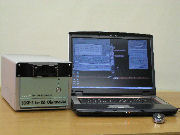
EGSE
of PWC for ISS
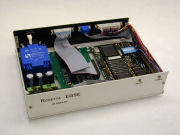
SLS of Rosetta
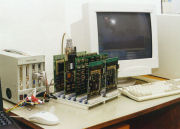
EGSE
and Lab.Mockup
of CDMS for Philae
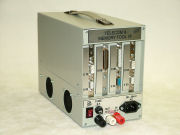
EGSE
(SLS) of RxTx
for Philae
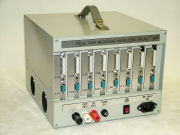
Real
Time Message Handlers to simulate Units of Philae

SLS of
Computers System of ISS's PWC
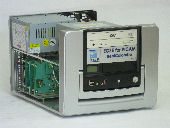
SLS of
PICAM for BC

SLS of
MAG for SO
|



















